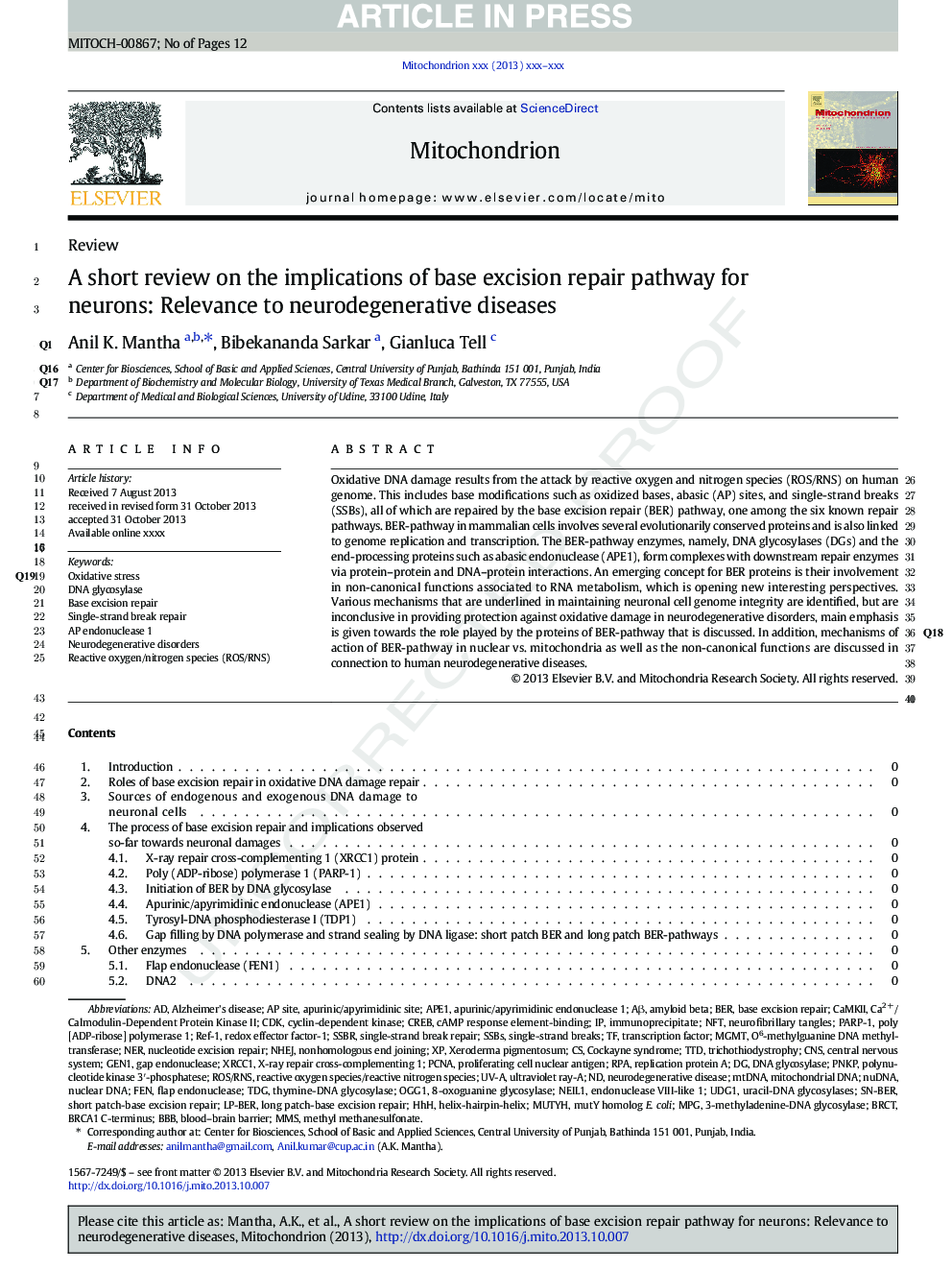| Article ID | Journal | Published Year | Pages | File Type |
|---|---|---|---|---|
| 8399528 | Mitochondrion | 2014 | 12 Pages |
Abstract
Oxidative DNA damage results from the attack by reactive oxygen and nitrogen species (ROS/RNS) on human genome. This includes base modifications such as oxidized bases, abasic (AP) sites, and single-strand breaks (SSBs), all of which are repaired by the base excision repair (BER) pathway, one among the six known repair pathways. BER-pathway in mammalian cells involves several evolutionarily conserved proteins and is also linked to genome replication and transcription. The BER-pathway enzymes, namely, DNA glycosylases (DGs) and the end-processing proteins such as abasic endonuclease (APE1), form complexes with downstream repair enzymes via protein-protein and DNA-protein interactions. An emerging concept for BER proteins is their involvement in non-canonical functions associated to RNA metabolism, which is opening new interesting perspectives. Various mechanisms that are underlined in maintaining neuronal cell genome integrity are identified, but are inconclusive in providing protection against oxidative damage in neurodegenerative disorders, main emphasis is given towards the role played by the proteins of BER-pathway that is discussed. In addition, mechanisms of action of BER-pathway in nuclear vs. mitochondria as well as the non-canonical functions are discussed in connection to human neurodegenerative diseases.
Keywords
BRCA1 C-terminusHHHMMSImmunoprecipitateRPAOGG1MPGpoly [ADP-ribose] polymerase 1BRCTAPE1XRCC1Ref-1SSBRCREBAP endonuclease 1NEIL1TDG8-Oxoguanine glycosylasenuDNAPCNAThymine-DNA glycosylaseLP-BERGEN1endonuclease VIII-like 1PNKPhelix-hairpin-helixNFTCDKPARP-1UV-ATTDMGMTAβBERCaMKIINHEJapurinic/apyrimidinic endonuclease 1apurinic/apyrimidinic siteCa2 +/calmodulin-dependent protein kinase IIMitochondrial DNANuclear DNADNA glycosylaseNERxeroderma pigmentosumROS/RNSSSBstrichothiodystrophyProliferating Cell Nuclear AntigenNeurodegenerative disorderscAMP response element-bindingamyloid betaAlzheimer's diseaseNeurodegenerative diseasenucleotide excision repairbase excision repairsingle-strand break repairreplication protein AOxidative stressCNSO6-Methylguanine DNA MethyltransferasemtDNAAP siteBBBBlood–brain barrierCockayne syndromecentral nervous systemsingle-strand breaksTranscription factorFlap endonucleaseFenmethyl methanesulfonateMUTYHneurofibrillary tanglesNonhomologous end joiningcyclin-dependent kinase
Related Topics
Life Sciences
Biochemistry, Genetics and Molecular Biology
Biophysics
Authors
Anil K. Mantha, Bibekananda Sarkar, Gianluca Tell,
